I. A Personal Lesson from a Tomato Plant
I still remember the first time I tried growing tomatoes in a raised bed in my backyard. I’ve always loved gardening, so I took care of that plant like it was my own child. Every day after school, I’d rush out to check on it—counting the flowers, admiring the first tiny fruits. That year, the weather was perfect. The plant grew fast, blossomed beautifully, and produced tons of fruits. I couldn’t wait for harvest day.
But then something went wrong.
As the plant grew heavier with fruit, it started sagging, resting on the ground. I thought that was just part of the process. But soon, I found many of the fruits were rotting before they even ripened. The part touching the soil had gone soft and moldy.
That was the moment it clicked for me: It wasn’t bugs. It wasn’t fertilizer. The real issue was the lack of a trellis. Something I had completely overlooked turned out to be critical for plant health and fruit quality.
A trellis does more than just help your plants stay upright—it improves airflow, supports heavier fruits, and even helps prevent pests and diseases. Sadly, many gardeners (even experienced ones) leave this step for last—when it’s often too late.
In this article, I’ll walk you through why adding a garden bed trellis to your raised beds matters—how it can save you time, money, and frustration—and how to avoid the common mistakes I once made.
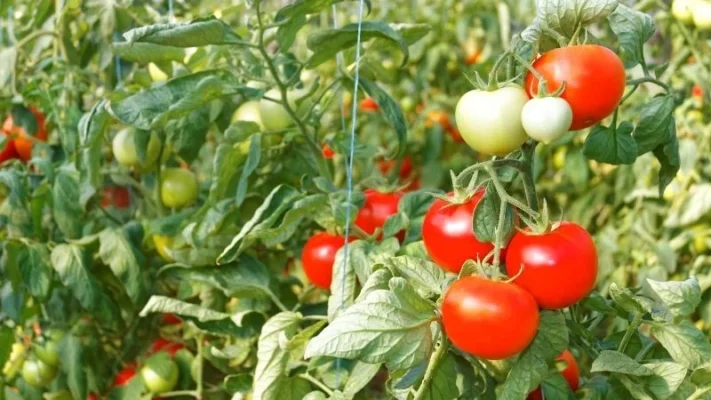
II. What Is a Trellis? Types of Garden Bed Trellises
The more time I’ve spent gardening, the more I’ve come to appreciate how differently plants grow. Some are super low-maintenance—you toss a few seeds in the dirt and they’re thriving in no time. Others demand patience, attention, and detail. One overlooked step, and you could lose the whole crop.
One of those crucial yet easy-to-ignore steps is building a proper trellis.
In simple terms, a trellis is a support structure that helps plants grow vertically. It keeps them off the ground, improves sunlight exposure and airflow, and reduces the chance of disease. For vining or soft-stemmed plants like tomatoes, cucumbers, and beans, trellising is almost a must if you want a healthy, productive harvest.
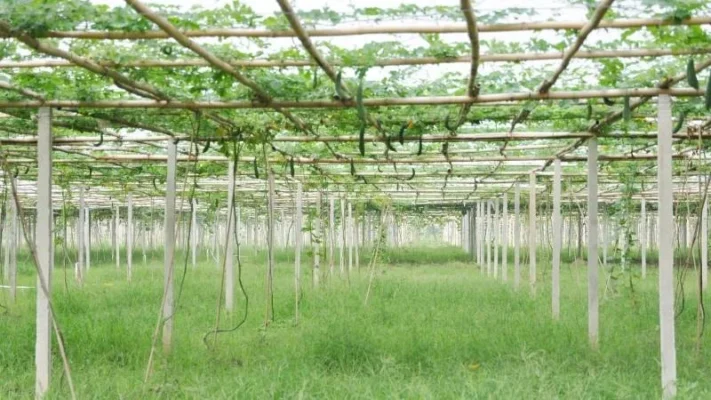
There are several types of trellises you can use:
| Trellis Type | Description | Best For |
| Flat / Panel Trellis | Vertical frame, often grid-style, can be free-standing or attached to fences/walls | Tomatoes, pole beans, cucumbers |
| A-frame Trellis | Two slanted panels forming an A shape, foldable for storage | Zucchini, bush beans, cucumbers |
| Arch / Tunnel Trellis | Forms a curved tunnel that plants can climb over, ideal for garden paths | Pumpkins, gourds, mini watermelons |
| Vertical Pole Trellis | Upright poles or frames, often with string or netting | Tomatoes, peppers, bush beans |
| Horizontal Trellis | Netting or frames placed horizontally 1–2 ft off the ground, plants grow up and over | Pole beans, cantaloupes |
Real-World Trellising Tips
Each trellis material has its pros and cons. The key is not sticking rigidly to one type—mix and match based on your needs and creativity.
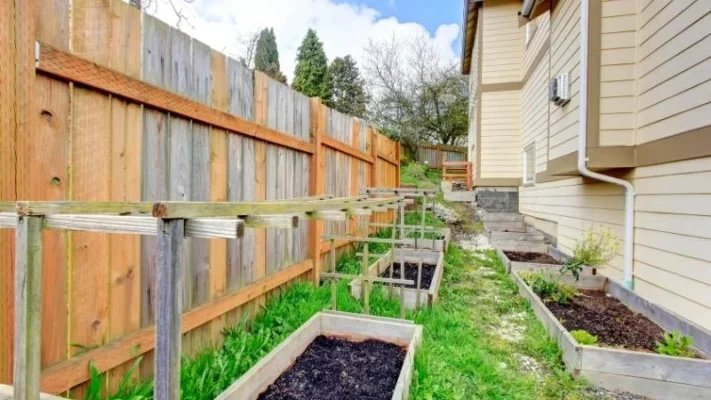
Here are two core principles I always follow:
🔸 1. Know Your Plant
Different plants need different kinds of support:
• Tomatoes, especially larger varieties, get heavy when fruiting—use strong wooden stakes or metal frames for vertical support.
• Vining crops like cucumbers or squash need both vertical posts and horizontal netting for climbing and spreading.
• Even within one species (like tomatoes), different varieties grow differently—so the more you understand your specific plant, the better your trellis will be.
🔸 2. Understand Your Growing Conditions
• In very hot climates, avoid using all-metal trellises—they heat up quickly and can scorch the plants. Try combining metal posts with wood or soft mesh.
• If space is limited, opt for flat trellises or wall-mounted styles instead of bulky A-frames or arches.
• If you’re short on time or energy, go for easy-to-install materials like pre-tied netting or simple snap-in wood frames.
• Got leftover materials around the house? Use them! DIY and repurposing are part of the joy of gardening.
✅ Example: Metal trellises are super sturdy, but in the sun, they get hot enough to burn your plants. Here’s how I fix that:
• Attach a thin piece of wood to create distance between the metal and the plant
• Drape soft mesh over the frame to act as insulation
• Adjust your vines so they don’t directly touch the metal
Back to my tomato mishap—I ended up sliding sturdy wooden sticks under the main branches and propping them up from both ends. It lifted the fruits off the soil and saved the harvest. But more importantly, it taught me to observe, adapt, and truly understand the needs of my plant.
👉 Bottom line: There’s no one-size-fits-all trellis. The best trellis is the one you design yourself—tailored to your plant, your space, and your daily care routine.
III. What Plants Actually Need a Trellis?
After that tomato lesson, I started paying a lot more attention to trellising. I asked my dad—who’s been farming his whole life—talked with neighbors, and swapped stories with long-time gardeners in the area.
Here’s a quick list of plants that definitely need or benefit from trellising:
🌿 Vining Plants – These Need Trellises to Thrive Naturally
• Pole beans: Without support, they tangle and attract fungus near the base.
• Cucumbers: Grow straight, cleaner, and healthier on a trellis—plus easier to pick.
• Zucchini & squash: Train them up an A-frame to save space and boost air circulation.
• Luffa & bitter melon: These heavy fruits need a strong, sturdy frame.
• Mini watermelons & cantaloupes: Use slings or mesh bags to support the fruit on a trellis.
👉 Not sure which material to use? Check out my post on Best Materials for Raised Garden Beds for a full breakdown.
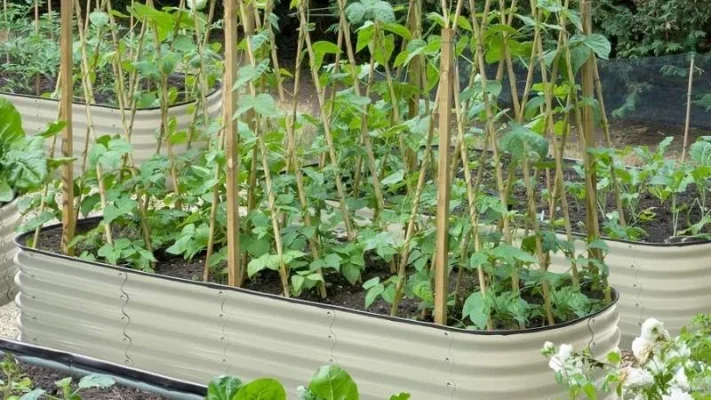
🍅 Soft-Stem Plants – Need Trellises for Stability and Yield
• Tomatoes: The #1 trellis-dependent plant. Heavy fruit, brittle stems—especially in wind.
• Peppers & eggplants: Once they start fruiting, they’ll topple without vertical stakes or ties.
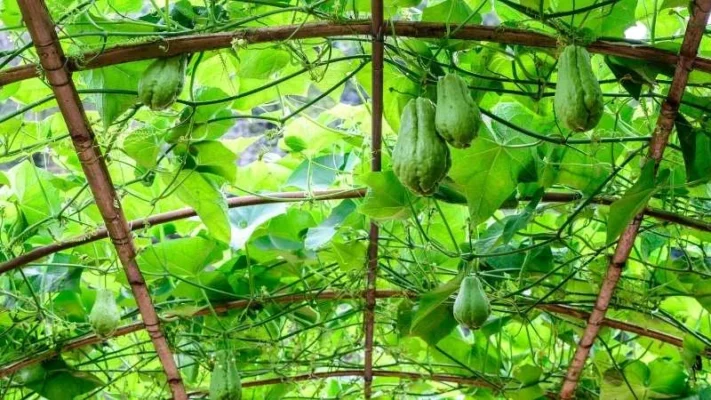
🪴 Bushy Plants – Optional Trellising for Space Efficiency
• Kale, water spinach, amaranth: Not required, but angled mesh trellises can save space in tight beds.
• Snap peas: Technically bushy, but they grow better and are easier to harvest when trellised.
IV. Key Things to Remember
👉 Build your trellis before or at the time of planting. Don’t wait until your plant is blooming or fruiting—late trellising risks breaking stems or knocking off flowers.
👉 Keep trellis height manageable. Make sure you can reach everything without a ladder.
👉 Understand your plant’s growth habits. Plan spacing so plants don’t fight for light or get overcrowded.
👉 Check in often, especially when plants are young. They need guidance early—if vines slip off, gently lift and secure them with soft ties.
V. Should You Build or Buy a Trellis?
If you can, I always encourage you to build your own trellis. It doesn’t have to be fancy or flawless. Just start. You’ll feel a special connection to your garden when you create the growing space with your own hands. Look around—bamboo poles, leftover wood, garden string, even scrap netting can be a great start.
That said, combining DIY + store-bought works just as well:
• Buy a basic frame for quick setup
• Add your own netting, ropes, or crossbars to customize it for your beds
If you’re short on time, tools, or experience, there are great pre-made trellises out there too.
👉 I’ve handpicked a few top-rated trellises that are durable, easy to install, and work well with raised garden beds—check them out here:
Tested and recommended for home gardeners—click product name to view on Amazon.
| Product | Key Features | Why It’s a Great Pick |
| 🔗 51 x 50 Inch Cucumber Trellis |
Metal garden cucumbers arch trellis, cucumber plant support for tomato, pea, zucchini, vine flower |
Sturdy metal arch + mesh, cool and airy. Great for many plants—perfect for cucumbers. |
| 🔗 Avalution 10 Pack Bamboo Trellis |
16″ natural garden ladder trellis, fan-shaped plant support trellis for potted plant decor |
Natural bamboo, eco-friendly. Customizable size and shape. Best for lightweight climbing plants |
| 🔗 MAYOLIAH Large Raised Garden Bed with Trellis | Deep Plastic Planter Box for Gardening Vegetables Herb Flowers | All-in-one raised bed with trellis – ready to use, Perfect for flowers and decorative plants |
With everything we’ve covered, I hope you’re starting to visualize what kind of trellis would suit your garden best. Whether you grow tomatoes, beans, melons, or simply want to make the most of your space, the right trellis can make all the difference.
Happy gardening—and may your plants always have something strong to lean on.

